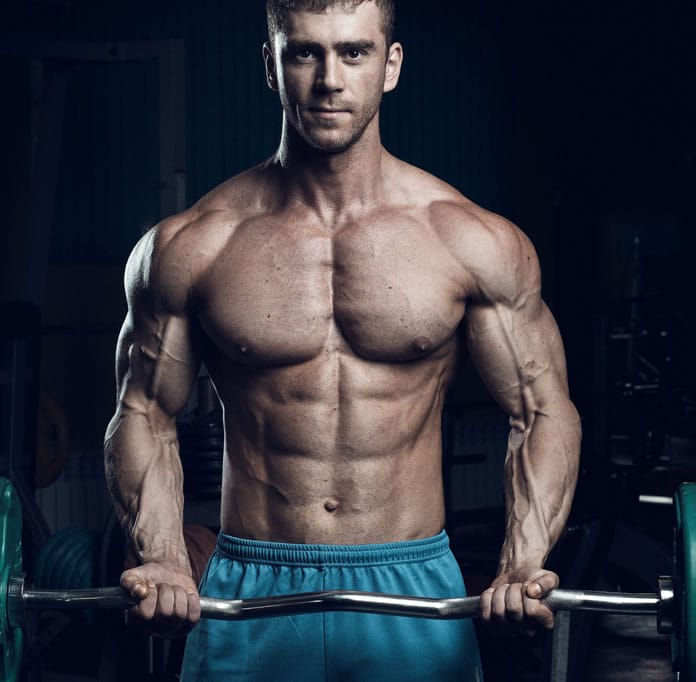According to their function and histological characteristics, three varieties of muscle are considered: skeletal (or striated), smooth and cardiac. There are also other cells whose function is similar to that of muscle called myoepithelial cells that derive from the ectoderm and are located in some external secretion glands in which the contractile function is required for the ejection of their content, such is the case of the parotid, submaxillary glands and mammary gland, among others.
To understand the development of muscle – especially striatum – it is essential to know the arrangement of the mesenchymal cells that make up the somite since they are multipotent and can form bone, muscle and dermis.
Somite differentiation
Mesenchymal cells (mesoderm) are arranged in the somite in two regions: ventromedial and dorsolateral. In the ventromedial region, the mesenchyme differentiates into a group of osteogenic cells called the sclerotome, which contributes tissue to form the vertebrae and ribs. In the dorsolateral region, the mesenchyme is grouped as a dermomyotome. This group of cells in the dorsomedial region forms the myotomes that originate most of the striated muscle, including the muscle masses of the upper and lower limbs. In the lateral region of the dermomyotome, the dermatome is organized, differentiating itself from the dermis. Of the three muscle groups, this chapter emphasizes skeletal muscle.
Cross-section of a chicken embryo to observe the somite components. The dotted line delimits the eight somites.
Skeletal muscle
Skeletal or striated muscle is the main tissue component of the body and forms the muscular masses of the axial and appendicular skeleton (extremities); its development goes through histogenesis and morphogenesis.
Nutrition tips to gain muscle mass
Working your muscles without giving them the fuel they need will only overload your body, and you won’t get the results you want. The best thing is that you keep in mind the essential points of diets to increase muscle mass:
Protein is the building block for muscles. It’s not just about gorging on protein after training – what matters is the total amount of protein you take in per day. If you want to see results, you should know how you distribute the macronutrients throughout the day. Beware: our body can only absorb about 20 grams of protein at each meal, so don’t go overboard!
To gain weight (muscle or fat), you need to eat more calories than you burn. Learn to gain weight healthily, without overeating or gaining weight.
But what if you already have a good level of muscle mass and what happens to you is simply that it is not very visible? Many people want to have a more muscular body, but that does not necessarily mean gaining weight. Are you trying to score abs but can’t do it? In that case, you should focus on losing fat and not increasing your caloric intake.
Muscle growth
Hypertrophy is the process by which growth in the size of the muscles takes place. Every day you train, applying the general principles to create micro-breaks in your muscles, that is to say: using a certain weight, doing specific exercises that involve more muscle fibres, a total exercise load that initiates this stimulus, and so on; These factors constitute the stimulus for the beginning of the process.
[Are you interested in the subject but don’t have time to read? Don’t worry, then listen: Episode 029 – What foods are rich in protein with José Antonio]
There is an accumulation of blood during training, “muscle pumping,” or localized muscle hyperemia (so we call it scientifically).
It is precise because after finishing an arm workout, you feel like they will explode from that pump and the next day, they hurt.
The body responds to this event, creating a rupture (which can only be seen under a microscope) in those muscle fibres in your arms.
Suppose there is a sufficient rest period (days where you do not train arms again), as well as a quality diet with enough grams of quality protein in foods usually of animal origin. In that case, you will have the raw material for your body to repair itself, creating an increase in the thickness of those muscle protein bands very gradually.
Muscle growth will result from repeating the process of stimulating fibres with training, feeding yourself a diet with enough quality protein, in addition to carbohydrates at the best times to train and healthy fats to cover the functions that your body needs to get from these foods rich in fatty acids, rest and Wait the time required for each time the muscle increased in size or diameter. [Also read The ABCs of a Training Plan (4 Secrets to Training)]

